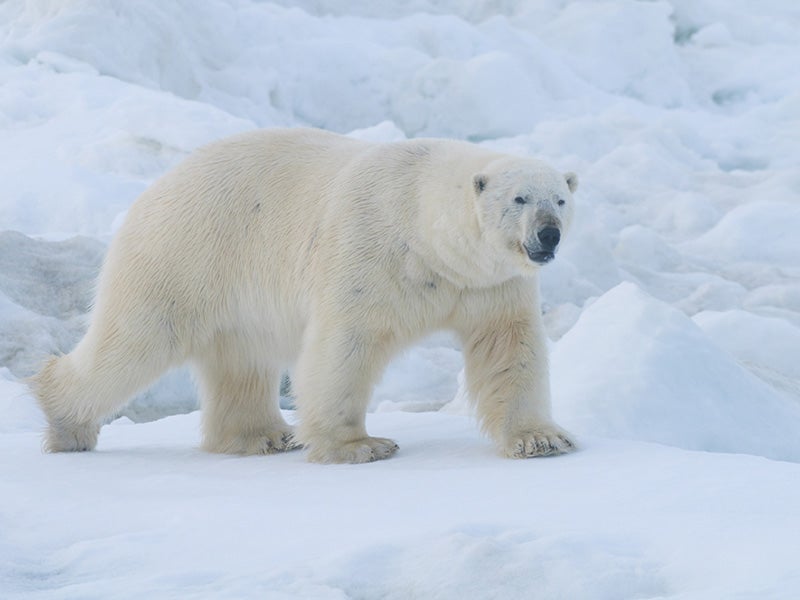Earthjustice stands with western Alaska tribes and families after severe storms devastated entire communities, displacing more than 1,000 residents just before winter. Learn more and how you can help.
Monday Reads: The Arctic Nights Edition
All we know, to the best of our knowledge, is that we don’t yet know enough

This page was published 13 years ago. Find the latest on Earthjustice’s work.
As portions of the contiguous United States find themselves (perhaps a bit uncomfortably) in winter’s chilly embrace, a recently published study in the scientific journal Marine Biology may shed new light on the wintry lifestyles of the Arctic regions of our country.
During this season, Arctic areas like the Beaufort and Chukchi seas, off the northern coast of Alaska, experience months of ‘polar nights’—times when the sun fails to make an appearance (making for a veritable vampire haven, one might say).
The extreme degree of coldness of these winter months is key to the survival of species like the polar bear and ringed seals, who depend on the restoration of thick sea ice (long since diminished during the warmer spring and summer months) in order to hunt and raise their young.
The little that we do know about Arctic ecosystems and the roles they play in Earth’s greater ecosystem, though, is vastly overshadowed by what we don’t know. As Earthjustice Attorney Holly Harris put it, even “federal government scientists admit big gaps in what they know about the basic features of the Arctic Ocean, like where various species of fish and marine mammals live and feed at different times of the year, how ocean currents move and affect the food chain in this ocean and how an oil spill could be stopped and cleaned up under frozen ice.”
The paper, “Bioluminescence in the high Arctic during the polar night”, underscored the vacuum of knowledge, reporting on fascinating, previously unknown behaviors from a study conducted in the Arctic region of Svalbard. For the first time, not only was bioluminescence observed during these polar nights, but seabirds from kittiwakes to guillemots were seen foraging (somehow) in the darkness.
The scientists saw what was occurring, but, like so many aspects of Arctic wildlife, the whys and hows are yet to be understood. That these discoveries have up-ended previously held assumptions about the Arctic ecosystem, is a concise example of how much we still don’t know about the Arctic. Significantly, the researchers concluded:
[These] results open new lines of enquiry regarding the function and process during a time of year when classical paradigms of Arctic ecosystems postulate that organisms are predominately in a state of hibernation … Ultimately, these questions also have implications for human activities (i.e., oil exploration) in the high Arctic, which up until to now has been considered ‘‘without life’’ during the polar night.
Over the past several months, the Environmental Protection Agency has approved permits for Shell’s massive drilling fleet and the pollution the ships will bring to the Arctic air, while the Interior Department has affirmed the sale of Chukchi Sea Lease 193 for oil and gas development. All are unnerving steps towards irreparably harming critical ecosystems we know so little about, and that are already suffering from the far-flung effects of black carbon pollution and climate change.
For many, the Arctic connotes icy, desolate wilderness, with little evidence of life and even fewer reasons to recommend its protection and preservation. The reality, however, is that it is a lush, complex landscape ranging from verdant summers to winters of renewal, as acclaimed wildlife photographer Florian Schulz has documented:
The months and weeks are counting down to summer 2012, when Shell intends to begin an aggressive Arctic drilling plan. Stay tuned to Earthjustice to find out how you can lend your voice to help protect these irreplaceable ways of life.
Opened in 1978, our Alaska regional office works to safeguard public lands, waters, and wildlife from destructive oil and gas drilling, mining, and logging, and to protect the region's marine and coastal ecosystems.